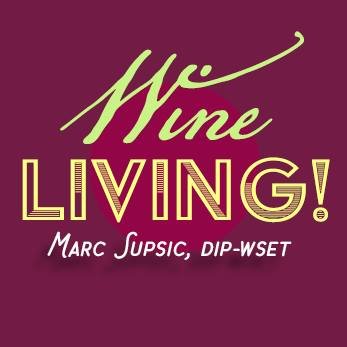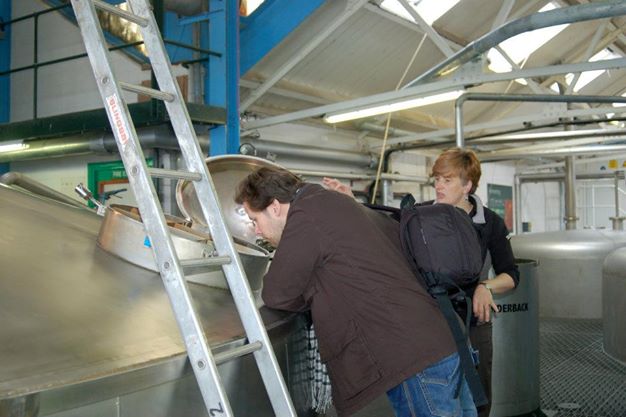The Birth of Wine Living
/A few years ago, I was faced with losing my job as a Graphics Designer. After fifteen years in the business, I had my ups and downs, mostly downs, and was thinking about getting out. It was time to rethink what inspired me.
The answer was, drinking. Haha, just kidding. Well, sort of. Not just sitting around drinking my face off, but rather, really exploring the miracle of how the stuff you drink gets into your glass. And the idea of how wine is an experience that can be shared by people.
The vineyards of Liguria, nortwestern Italy.
Wine was already a big part of my life. For one, I made my own at home, and secondly, I had taken a few basic Oenology classes through UC Davis. My wife Michelle and I were traveling to Europe, drinking lots of les vins and sharing them at home. We loved learning about the people and cultures that make vino.
Wine was definitely a fun preoccupation, but most hobbies are typically not lucrative. I inquired about setting up a small winery and learned that it takes a lot of money to make wine legally. I looked for work at local wineries, but the best they could offer was a weekend position in their tasting rooms. I took some basic night classes at Community College, even a few Horticulture classes at one time.
A four-year degree at an agricultural institution was an option, but a huge commitment. I needed to transition out of a major career, with a wife, a home and bills to think about.
The Wine & Spirit Education Trust (WSET) seemed to keep popping up in my searches. So I called their Philadelphia branch with questions. The instructor offered this: "It's not an easy course, but I think you have the background to do this." It seemed the best fit at the time. I enrolled, not fully knowing what I was getting into.
This is typically how you'd find me during the WSET years; studying at the dining room table in every available moment I had.
After diving in, I realized the WSET was for people who already worked in the wine industry. Restaurant Wait-Staff, Sommeliers and wine distributors were in the classroom. They spoke in an insider code I didn't understand: Dropping names and wine lingo like it was hot. They all knew each other.
I hated it. I was just a guy who loved wine. I didn't care how many units of Dom Perignon moved last quarter, or who had an exclusive tasting of Marcel Deiss' wines. All I wanted to do was get closer to the wine itself.
My wife encouraged me to stick it out. For almost three years, I pressed on: Learning the major Appellations and what their yield limits were, what a Glassy-Winged Sharpshooter is, how Phylloxera almost ruined the European wine industry, learning that Riesling can sometimes smell like gasoline, and the difference between a Fino Sherry and an Amontillado. I even passed a two-hour blind tasting exam of twelve wines, followed by a seventeen-page written essay exam.
In September 2012, I got the word that I had graduated the Diploma Course. Not bad for an outsider, especially considering most in my class had either dropped out or failed the exams. I was a Diplomate and could use the fancy post-nominal letters DWS (Diploma, Wine and Spirits) .
I had hoped, by this point, a career direction would be apparent but still I had no idea what to do with myself. I learned so much with the WSET, but I had no interest in looking at wine as a product. I didn't want to lose the original passion or the excitement I had about wine.
The WSET taught me that the wine business is not really well-known for embracing outsiders. It dawned on me that this is why regular people are intimidated by wine. Much of the industry speaks in a language that only they can understand: They're geeks, talking to geeks.
Learning about Scotch Whisky at Laphroaig Distillery in Scotland.
Buying and selling wine deals in facts and figures. But enjoying wine is about merging the senses, emotions and context. French Burgundy is much more remarkable when you're among the red and gold fields of Dijon, crusty baguette and a nice Epoissés cheese at your table. Talking to the humble family that crushed the grapes and put the wine in the bottle makes you feel closer to it.
Wine can be a part of life, and a living, organic thing. You get more out of every glass, every sip, if you understand its story and the people behind it. That's what I was interested in conveying to people.
I realized that was my mission. But I still had no platform. So I looked into my toolbox to see what else I had to work with.
Editing in the home studio.
During my studies with the WSET, I would run practice tasting exams. I learned very quickly that you can't drink six bottles of wine on your own, so you might as well invite some friends over to share it with. Those lucky dogs got to drink expensive bottles of wine, on my dime, for almost two years straight! And since we were drinking, we needed food.
This is how I got the idea to start doing private tastings in people's houses. I liked the intimacy of a small group, tasting and pairing, interacting and asking questions, sharing thoughts. It was immersive, educational, and fun.
Likewise, the videos grew organically out of our travels. I'd always have a video camera with me on vacation and one day while in Provence, I turned the camera around and very shyly started talking about the vineyard we were visiting. It was awkward, unrehearsed, but I also felt I had something there. What if I polished the idea up and started making informative videos on wine and spirits? Hmmm...
The very first Wine Living video!












Miles Raymond has a recurring headache - and the prescription for what ails him - is copious amounts of wine. Coincidentally, that’s also what’s causing the headaches.